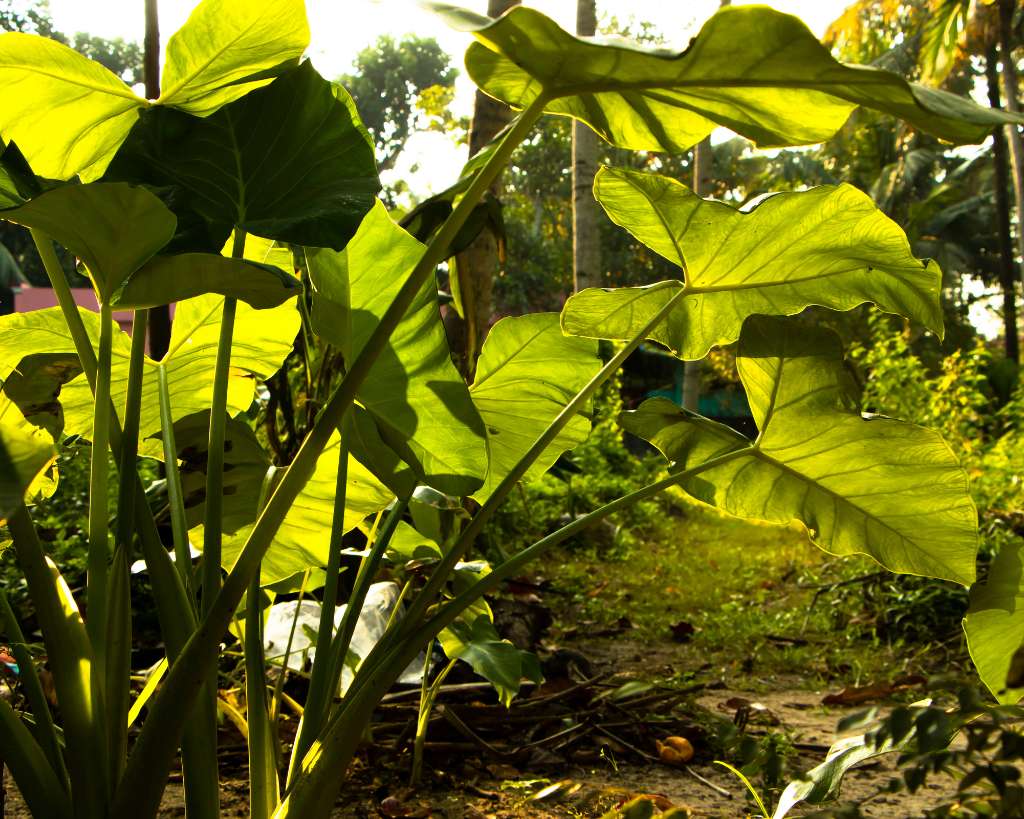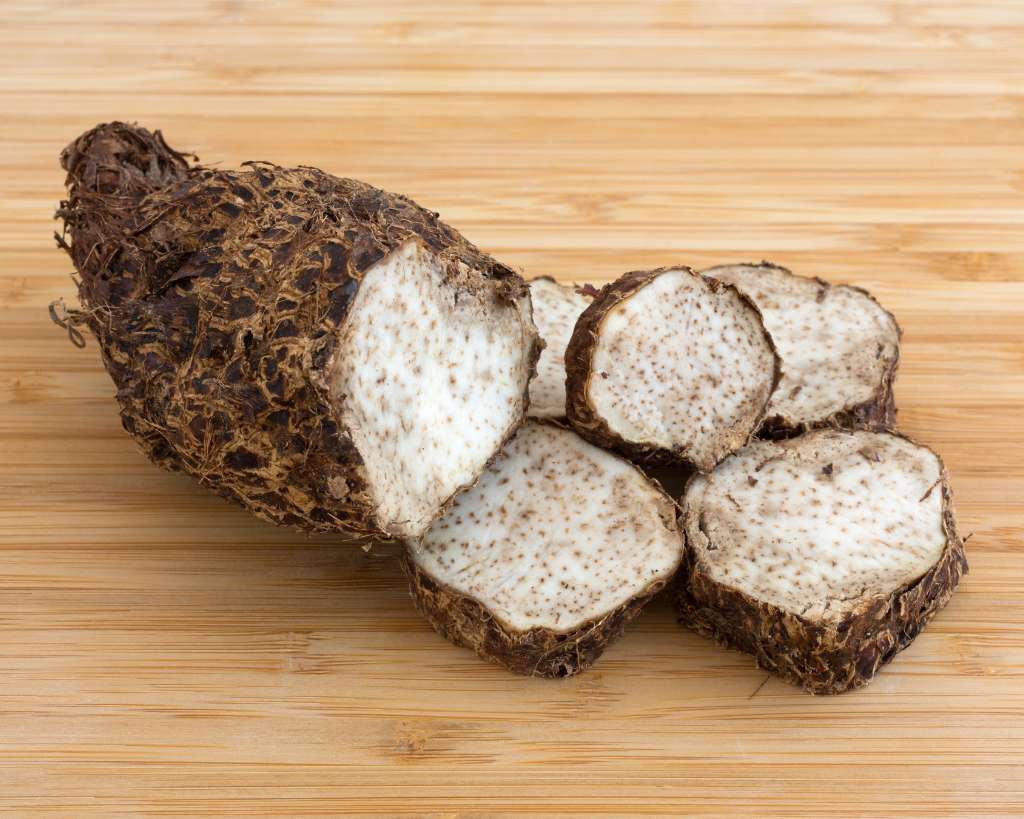Malanga(Xanthosoma sagittifolium) is a popular root vegetable that grows in tropical and subtropical regions of Africa, South East Asia, South America and Oceania.
It is also known as eddo, yautia, cocoyam, coco, and tannia in different parts of the world. It is commonly referred to as “Elephant Ears” in the United States due to its resemblance to the elephant ear plant. However, it is much prettier than the elephant ear plant.
It is mainly cultivated for its starchy tubers, known for their high nutritional properties. A lot of people use it to make soups, scones & curries.
Here is a complete guide on how to grow malanga.

What does Malanga look like?
Malanga looks like a cross between a potato and a ginger root. It has brown, hairy skin and white, starchy flesh.
The arrow-shaped leaves of the Malanga plants can grow up to 3 feet in size and 6 feet in height.
The leaves are edible, and the young leaves can be consumed like spinach. However, it is essential to boil them properly before using them.
How to Grow Malanga?

Using a sharp knife, cut the leaves and stems from the corm or tuber and plant it in a hole dug at least 4 inches deep and 2 meters apart. By keeping them apart, the plant grows better, and the leaves have more room to flourish.
Planting seed pieces of the Malanga plant requires soaking them in fungicide and letting them dry for at least two hours.
After planting the Malanga roots, water them thoroughly. Using sugarcane as an organic mulch which will help keep them grow well, stop the obnoxious weed growth and retain moisture in the soil.
To ensure the Malanga Plant grows well, water it three times a week for 20 days, then once a week during dry weather.
A well-draining moist soil is required for Malanga. Poultry manure can be applied at a rate of one handful per square meter to feed them.
The plant thrives in climate zones 7 to 9, 14 to 16 and 18 to 25. Place it under full sun for bumper growth.
How to harvest and store Malanga?

Malanga can be harvested after 9-12 months. One must be attentive while digging them out because it can damage the cormlets.
If the stem of the Malanga plant is thicker, the cormlets might be larger; therefore it is better to dig at a considerable distance to ensure that the cormlets are not damaged.
Wash them well and use them as you like.
You can store it in a Styrofoam box with sugarcane in a cool place to keep them fresh for a few weeks.
Malanga Pests & Diseases
Some of the most common malanga pests include aphids, thrips, and whiteflies, which can damage foliage and reduce yield. To control these pests, you can use insecticides or natural predators such as ladybugs.
Diseases can also be a problem for malanga, with common issues including root rot, leaf blight, and powdery mildew. To prevent and control these diseases, it is important to practice good crop management, such as proper irrigation and using a 10-20-20 fertilizer, as well as using fungicides when necessary.
Malanga Varieties To Grow
Some of the most common varieties are Xanthosoma, Calathea, and Colocasia. Each variety has its own unique flavor and texture.
Xanthosoma, also known as cocoyam or tannia, is usually white or yellow in color and has a starchy flavor similar to potatoes. Calathea is a lesser-known variety which has a slightly sweet taste and crunchy texture.
Colocasia, also known as elephant ears or taro root, is one of the most popular varieties and has a sweet nutty flavor. Malanga can be cooked or eaten raw depending on the variety and preparation method used.
Also Read: Malanga vs Taro
Conclusion
Our guide has some basic, straight-forward steps on how to grow malanga and harvest it. With the proper care and attention, malanga plants can thrive and produce healthy, delicious roots that can be enjoyed in various ways. So why not give it a try? You may be surprised at how much you enjoy growing and eating this unique root vegetable.





[…] RELATED : How To Grow Malanga […]